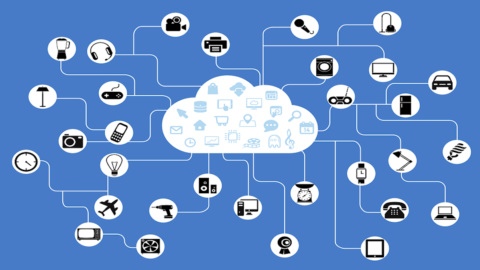The challenge with Fintech has begun. And it will soon also overwhelm the insurance sector under the blows of the continuous evolution of the Internet of Things (IoT) and of generation Y which is changing the old way of interacting with customers. A research recently published by the information technology and consultancy firm Capgemini and by the global non-profit organization Efma indicates that traditional insurance companies, in order not to be left behind, will have to implement a radical change.
Two main threats identified in the study: on the one hand the dynamics of interaction with i change Generation Y customers who have higher expectations and different ways of doing business; on the other the wave of “connected technologies” (Internet of Things, IoT), in the form of innovations such as smart home ecosystems, wearables and machine-driven drones, robots and automobiles, will transform not only how insurers connect with their customers but also how they evaluate and manage risk. “As it experiences intense digitization, the insurance industry needs to brace itself for the inevitable massive change brought about by Generation Y and the IoT,” he said. Vincent Bastid, Secretary General, Efma. “Insurers who make this a top priority to improve their ability to manage and exploit data and risk will be best prepared.”
Research, the World Insurance Report 2016, presents data from more than 15.000 insurance customers globally through the Capgemini Voice of the Customer survey and IL Customer Experience Index (CEI), as well as results from more than 150 interviews with top insurance company executives. The research covers 30 markets across North America, Europe and Asia-Pacific, representing 93% of the global insurance market in terms of premium income.
ENGAGE GENERATION Y
From the "Capgemini Voice of Customer" survey, carried out by interviewing more than 15.500 customers worldwide, it emerged that customers of generation Y, i.e. young people between the ages of 15 and 34 (so-called Millennials), have more interactions with their insurer across all communication channels, especially digital ones. In numbers, this means they interact up to 2,5x more on social media than other customers and over twice as much via mobile.
Yet higher levels of interaction don't translate into a better experience with your insurer. On the contrary. For Generation Y customers, the study says, they are "much less likely to have positive experiences with their insurance company than consumers of other age groups, despite much more frequent communication." In fact, the survey recorded levels of positive "customer experience" 20% lower than those of customers in other age groups. One explanation is that Generation Y customers have higher standards of expectations on digital channels than older customers. A point that should not be underestimated, however, given that more than a quarter of all consumers plan to buy or renew their insurance through digital channels in the next 12 months.
This is why, Capgemini notes, "low levels of positive customer experience among Generation Y customers are particularly alarming for the industry". Especially since Generation Y is attracted to the new emerging world of Fintech. Nearly a quarter of this generation's customers, the survey found, say they are likely to purchase insurance policies from non-traditional technology-led providers. “Whenever companies fail to pay due attention to their digitally advanced Generation Y customers, they run the risk of pushing them towards an ever-growing population of new non-traditional, technology-driven competitors,” said Raffaele Guerra, Senior Vice President Insurance Sector Leader. by Capgemini – Generation Y is clearly showing that they do business differently and that only insurers that can meet their terms will have a clear competitive advantage.”
WATCH OUT FOR SMART HOMES, WEARABLES AND DRONES
An even more underrated revolution in the insurance world is the transformation that the "connected technologies" (Internet of Things, IoT) will bring in the traditional insurance business models in terms of connecting customers and redefining risk. On the first front, the study says, these technologies will change the way insurers connect to their customers. Think of smart ecosystems for the home, wearables, machine-guided drones, robots and automobiles. “And yet – says Capgemnini – despite this threat, insurers are significantly underestimating the degree to which “connected technologies” will be widely adopted. Only 16 percent of insurers, for example, think customers will embrace driverless cars, while 23 percent of customers have expressed interest."
Generation Y will play an interesting role here too. Gen Y affluent consumers are by far the most likely to adopt IoT technologies (50% of them). To which can be added more than 45 percent of "well-off" customers of generation X (those born between 1960 and 1980, aged between 35 and 55) who are willing to adopt connected devices, intelligent ecosystems and wearables. In the Internet of Things, the determining factor is wealth ($250 or more in assets). However, the study also shows that affluent customers are also the ones most likely to buy policies from non-traditional and technology-led providers. In fact, almost 31 percent of these say they are inclined to buy insurance from technology companies, a percentage that rises to 47 percent if only Generation Y is considered.
SO THE IOT CHANGES THE RISK
But it's not just a question of "connecting" customers. The Internet of things is bound to bring about a more profound revolution than it will have even greater repercussions on the way risk is assessed and managedthus impacting on the fundamental principles of the insurance business. “In a connected world – explains Capgemini – the data provided by connected devices, intelligent ecosystems and wearables will increase risk transparency, a dynamic that will probably lead to new business models, especially in terms of pricing and risk control. The ownership of the risk itself will move with the connected technologies, as will the responsibilities of the actions: for example in the case of the driverless car, it will move from the owner of the car to the automaker”.
Not only. The IoT will change the current balance between operators. “The IoT weighs significantly on the issue of the level of risk exposure – says the study – through more secure environments. This has significant impacts on premiums, threatening some operators, but simultaneously offering opportunities for those able to grasp the emerging risks inherent in the rate of changing technology becoming more pervasive in people's lives and in commerce”.
That's why the study indicates that companies need to prepare for the inevitable business transformation and makes three recommendations: short, medium and long term. In the short term, companies will have to build structures that are both solid and agile; in the medium term, they will have to refine their value proposition through strategic alliances and data-driven insights. Long-term strategies, Capgemini concludes, "must focus on business transformation to keep up with the emergence of new risk profiles and new interaction models, due to changing customer behavior and the impacts deriving from the IoT on risk selection, pricing and claims prevention”.




